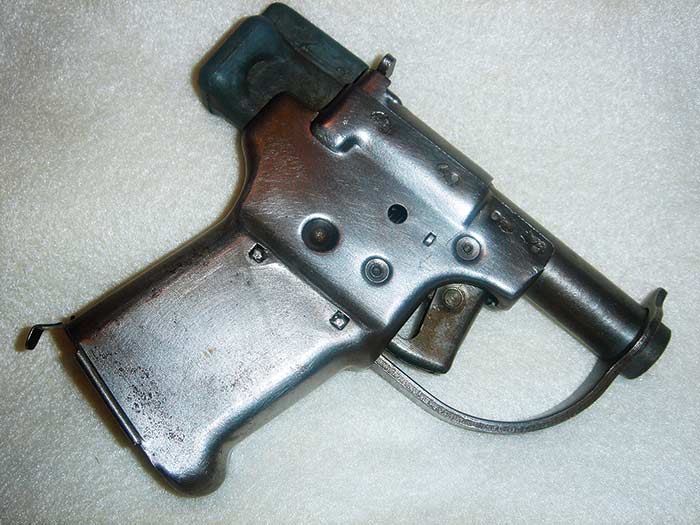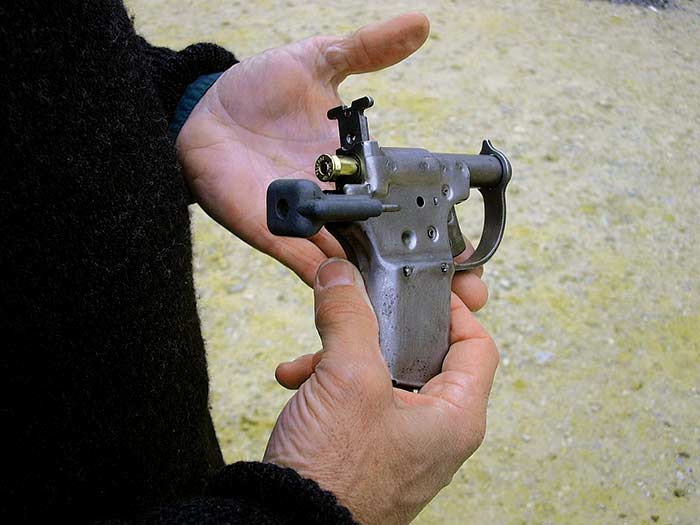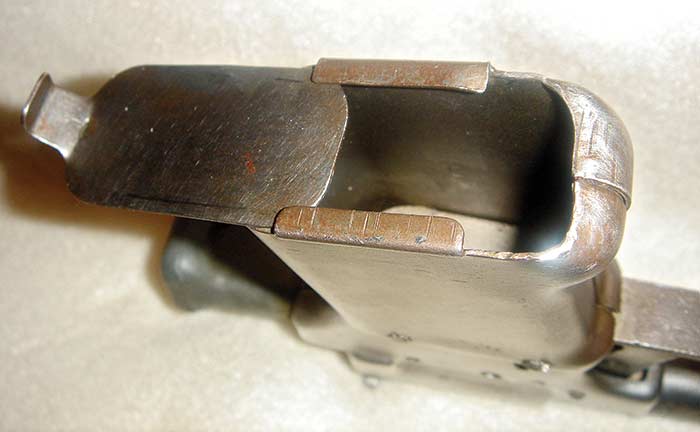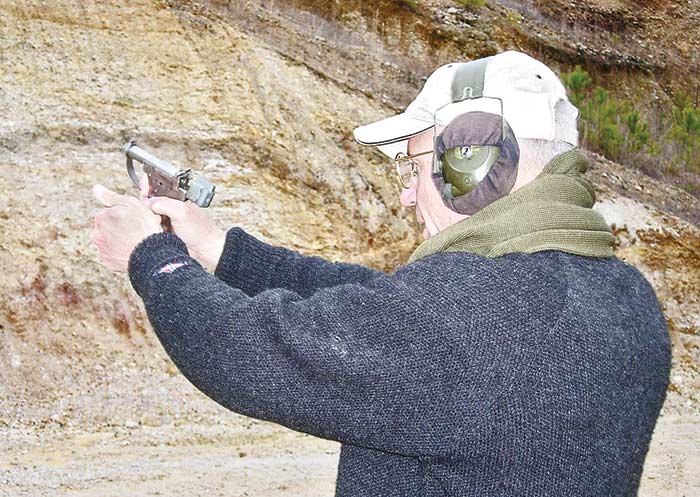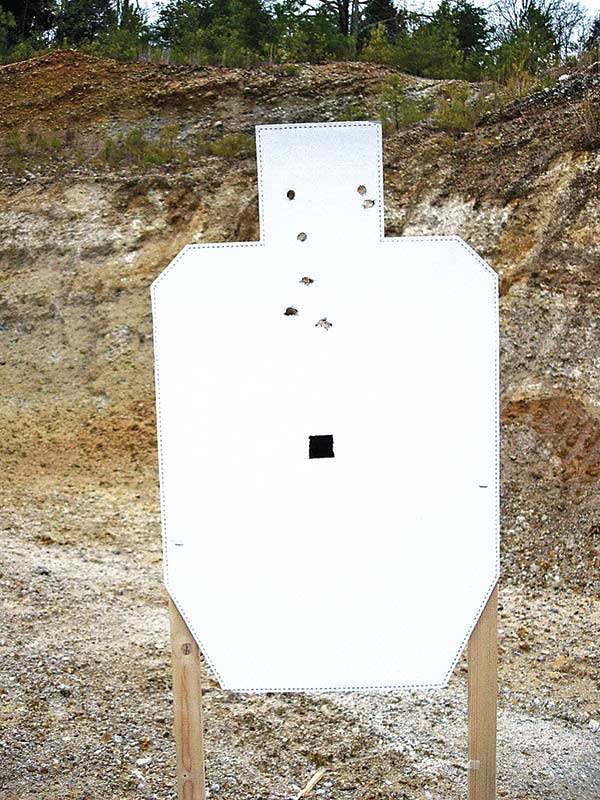A Gun For A Gun
The Liberator pistol was “new thinking” back then
Historically, one of the lead elements to the bulldogging of a civilian population in warfare is the disarmament of the private sector. Unarmed people find it very hard to defend themselves against anything — including their own government — using the term government loosely. Edi Amin of Uganda, in general terms, didn’t worry about paying his troops. He simply armed them and told them to take what they wanted or needed from the civilian population.
One of my biggest points in training is to teach students they should be able to use or fight with weapons other than their own. We would all like to have our favorite rifle or handgun if there was going to be a confrontation, then again it might not work out that way. Over an extended period of time even your favorite firearm may break, run out of ammo or be limited in effectiveness because of a lack of or loss of spare magazines or parts.
In some cases one might even have to use a gun he really wouldn’t like to fight with, if for no other reason than to gain access to an opposing force weapons system. As an example, using a pistol to gain access to a rifle or a rifle to get to a rocket or grenade launcher. Exotic thinking I guess, unless it isn’t.
The Gun For A Gun
Probably one of the most unique examples of the “shooting someone else’s gun thought process” actually being applied occurred during World War II. In 1942 the US Army asked for and received a design for the FP-45 Liberator single-shot pistol. This pistol was made by the Inland Guide Lamp Manufacturing Division of General Motors. The pistol was designed from the ground up with conception to completion of the product in six months. Even though this is simple enough, think about this: From the concept to the design to the completion of the project included the production of 1 million pistols … in six months. In reality just less than half of the six months time was spent in actual manufacturing of the 1 million FP45s in the Anderson, Indiana, plant. American industry and ingenuity at its best.
The Deception
Being wartime and the “loose lips sink ships” concept being applied, the FP designator stood for Flare Pistol and the whole parts nomenclature of the pistol was masked with fake names to make sure anyone who saw the plans wouldn’t know what it was, nor what it was being built for. The unrifled barrel was called a tube, the firing pin was called a control rod and so on. Sneaky, huh?
Theoretically, the one million FP45s were to be dropped behind enemy lines in such overwhelming numbers occupying troops could never collect them all.
Then, recovered in the hands of our friends, they could be used at short range to dispatch an enemy soldier thereby allowing our indigenous friends to gather up a rifle and continue the fight towards gathering a bazooka or artillery piece to shoot at the occupying troops.
Operation
The pistol was dropped from planes in a box with the hollow butt being filled with 10 rounds of standard .45 ACP 230-grain FMJ ball ammunition. Added was a stick to push out fired cases and an instruction sheet. To load, the shooter simply pulls back on and
rotates the firing pin striker clockwise to hold it in place while loading. Once the striker is out of the way, an up and down sliding breech plate or face is lifted to expose the chamber. The loaded cartridge is placed in the chamber and the breech plate lowered. The striker is then rotated back to align the striker/firing pin with the hole exposing the primer though the breech plate face. Then all it took was to close the range, point a feeble sort of sight like thingie mounted on the FP and pull the trigger.
Probably praying during this last process.
The FP45 isn’t what I would call comfortable to hold. Upon pressing the trigger, called a “yoke” in the parts list, the triggerguard, called a “spanner” in the parts list, whacked the crap out of my hand, called a “finger” on my parts list. Shooting at a standard ISPC “occupying soldier target” from five yards the pistol shot 8″ high on the center of the three-shot group I fired
while the sights were placed in the center of mass. At seven yards the rounds fired struck 12″ high from the point of aim.
As an interesting note, at seven yards, three of the four shots fired inverted and struck the target backwards leaving a wadcutter-like hole in the target, which I think would work. While researching the FP45, many comments are made as to the time frame required to load as being lengthy. In fact in more than one place it said it takes longer to load the thing than it did for one to roll off the assembly line during production. Experts declare the production time was six or seven seconds per gun while it took 10 seconds to load. I worked on a speed load and, after I knew how the FP45 worked, I had several loads in about the 7-second time frame. I guess I still won’t be a threat to Rob Leatham.
Value Today
Somewhere, someone will complain I actually shot this valuable piece of history. I did, then again I shoot my engraved guns also, so we’ll all just have to get over it.
The FP45 is in fact a piece of history and I am grateful I got to shoot it and if someday I run across one in the middle of a big plastic gunfight, I’ll be able to load a gun not mine and use it to get another, hopefully, bigger gun.

Get More Carry Options content!
Sign up for the newsletter here:
